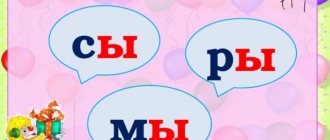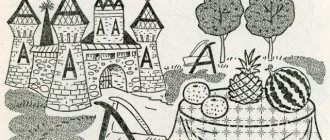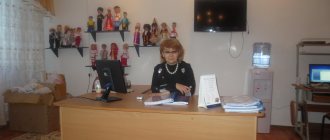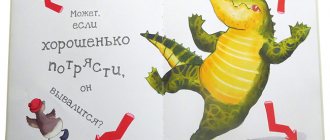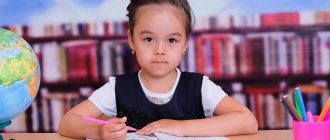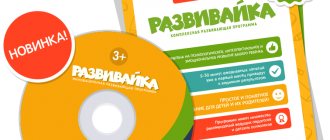Speech environment as a means of teaching literacy
Speech space is a very broad concept that consists of many components. This can include different speech samples that are accessible to children. At the same time, not only people can talk around, but radio and television can also sound.
L.P. Fedorenko believes that the speech environment can play a developing function. He believes that this makes it possible to intensify verbal communications. And this environment makes it possible to reveal the student’s full speech potential. But such an environment cannot arise spontaneously. It comes about as a result of deliberate effort.
The author believes that there are two components of the speech environment: this is the natural environment of communication, as well as communication with other children. The second component is an artificially created speech environment.
A free environment is a child’s communication with peers and adults. It occurs naturally during different regime moments. But it can be used to achieve maximum effect.
The artificial environment is a speech space that is purposefully organized by the teacher to achieve the assigned tasks. To do this you need to use certain techniques.
You could even develop a communications center. It will consist of the following elements:
- theaters;
- various visual aids;
- bookshelves.
The aids used may be:
- didactic board games;
- albums on sound pronunciation;
- illustrated materials;
- paintings.
At the same time, all materials used must be selected so that they coincide with the age characteristics of schoolchildren.
N.K. Usova also studied this topic in detail. She wrote that kindergarten staff should organize a speech environment that would help children actively develop their speech literacy.
The speech environment should be created so that schoolchildren have the best conditions for the development of speech literacy. At the same time, children’s speech should develop not only during classes, but also during independent pastime.
Related posts:
- What is folklore and how to use its forms? Small forms of folklore are successfully used in various types of activities for…
- Logorhythmic classes and correctional means By various means, speech therapy classes contribute to the effective correction of speech in children...
- Means for the prevention of dysgraphia in preschoolers with general speech underdevelopment Prevention of dysgraphia in preschoolers with OSD - means of prevention, games,…
- What is "War and Peace" about? Summary of the novel “War and Peace” by chapters. All answers...
Literacy Techniques
During the lesson, the teacher should strive to use different techniques so that the children change types of activities. It is necessary to diversify the form of presenting new information. Let's discuss a few techniques:
- Lull rings: this is an interesting tool that allows you to shape the intellectual abilities of schoolchildren and their creative impulses. There are many different materials that this device can be used for.
- to teach schoolchildren to read and write, you can also make Lull rings, and place letters on one of them, and on the second - objects whose names begin with these letters. Children must correctly connect the letters and the corresponding images.
This interesting technique helps to captivate children, create an atmosphere of ease, and help them perceive new material.
By studying letters with children, you can help them better assimilate new material. To do this, you need to play with these letters in different creative tasks. For example, you can draw a letter and decorate it with different patterns.
You can also fashion letters, sew dresses for them, lay out letters from peas or buttons. They can be drawn on the sand, made from sticks and other materials available to children.
It is also necessary to test children's knowledge using test materials.
The exercises that are included in this work are material with images of objects for studying vowels. Schoolchildren connect a letter and an object that contains this letter in its name. You can also draw diagrams for words, showing the number of syllables and stressed syllables.
Where to start learning to read and write?
L.S. Silchenkova believes that it is necessary to begin learning to read and write during the period of development when mental functions begin to mature. The learning process will be effective only if the characteristics of the child associated with his age are taken into account, as well as his individual capabilities, which are determined by speech, perception, thinking and memory
It is necessary to devote enough time to form the child’s speech hearing. It is also necessary to develop the child’s ability to remember letter styles.
The human brain, according to N.G. Altukhova, contains cells that perform the function of remembering the outline of a letter without making any effort. These same cells allow you to use those letters that a person has already memorized.
The process of developing modern methods of teaching schoolchildren to read and write has a rich history.
K.D. Ushinsky proposed the so-called sound method of studying literacy. It had certain advantages and disadvantages. Much attention was paid to introducing schoolchildren to the sound aspects of speech, as well as to developing sound analysis.
According to P.S. Zhedek, there is a more advanced method of teaching literacy. According to his approach, it is necessary to divide words into individual syllables. And each syllable can also be divided into separate sounds.
In this case, sounds that stand out must be indicated using a printed letter. And after that you need to read the written word. But this approach does not reveal the mechanism of the reading process, the moment when individual sounds merge into syllables.
Another technique was developed by V.A. Kiryushkina and other researchers. They based their approach on speech sound analysis. What is new in this system is the different order in which letters and sounds are learned. Letters and sounds are learned in an order based on the frequency of their use in the native language. The most frequently occurring sounds and letters are studied first, and then in descending order.
A.A. Nazarenko also offers an interesting approach that deserves special attention on our part.
Schoolchildren need to be taught methods of mental action: children analyze sounds, engage in positional reading, relying on the entire alphabet. In this case, it is necessary to follow strict stages of development of reading methods.
The important thing about this technique is that during training, students begin to master first quantitative and then qualitative sound analysis of words.
After analyzing the program, we realized that the main attention in it should be paid to the sound structure of the word, developing the ability to conduct sound analysis, and subsequently teach children to read and write at school.
Literacy teaching methods
Today there are many different programs, the content of which has significant differences. Therefore, the requirements for preparing children depend on whether children are taught the basics of literacy and at what age this is supposed to be done.
At the same time, there are many facts that allow us to highlight certain directions in teaching literacy to children of primary school age. There are known patterns that work in the field of teaching reading and writing.
There are various proven teaching methods. Positive results were obtained from the use of these methods, which significantly influenced the intellectual and speech development of schoolchildren. And these are the areas of work:
- you need to introduce the child to the word: he must learn to isolate words as an independent unit of speech;
- introduce children to sentences: children should also be able to isolate sentences as speech units;
- introduce the verbal composition of a sentence: children must learn to divide sentences into words and compose sentences from two to four words;
- introduce children to the syllabic structure of words: children can divide small words into syllables and make words from different syllables;
- To introduce children to the sound structure of a word, it is necessary to develop their ability to analyze the sound composition of a word, determine the number of sounds, their sequence, compose words with given sounds, and understand the meaning of the phoneme.
The main role is played by the development of children’s ability to analyze the sound composition of words. And as we already wrote about this above, the processes of writing and reading are processes of translating oral speech into graphic images and vice versa.
